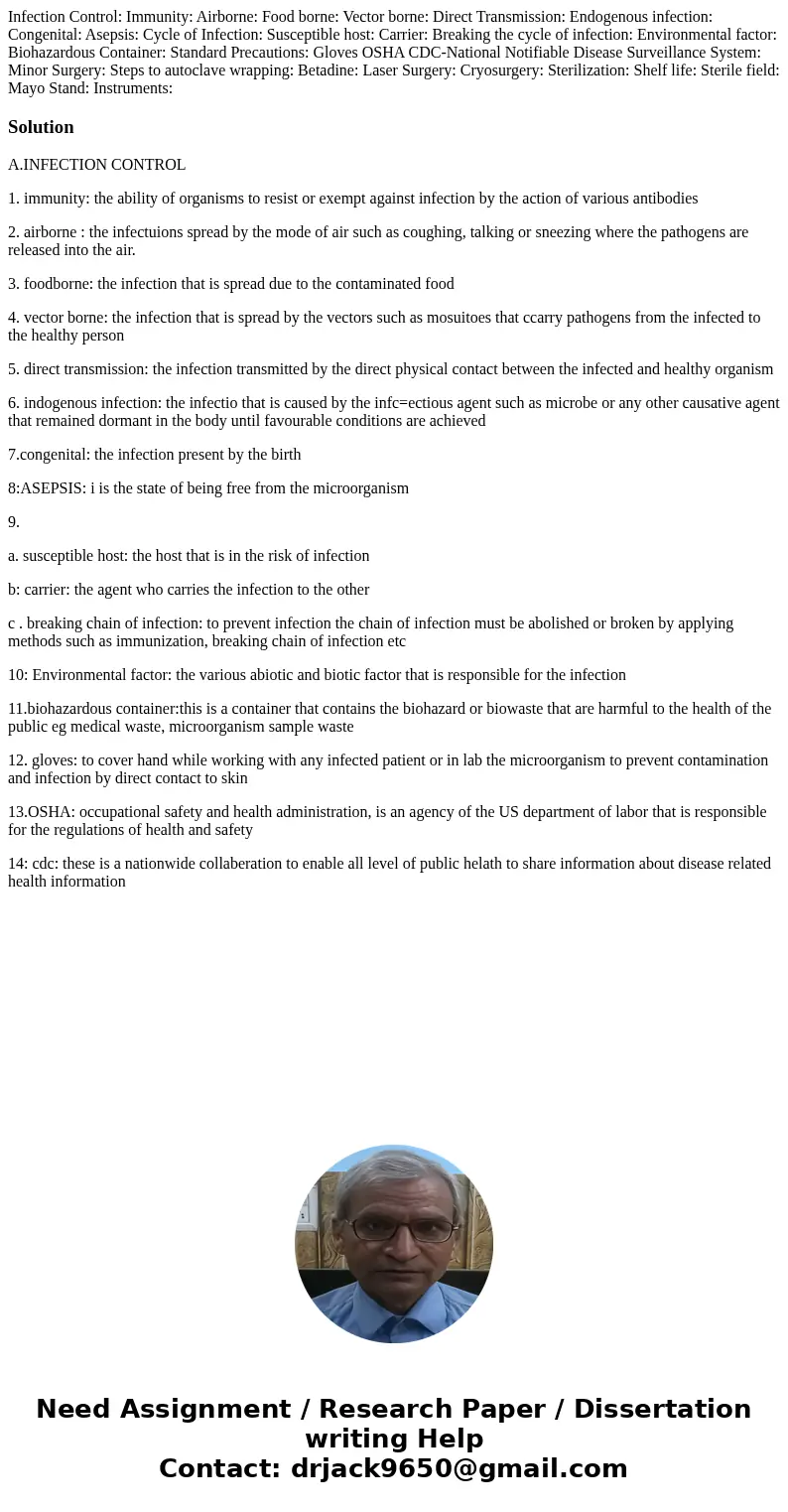Infection Control Immunity Airborne Food borne Vector borne
Solution
A.INFECTION CONTROL
1. immunity: the ability of organisms to resist or exempt against infection by the action of various antibodies
2. airborne : the infectuions spread by the mode of air such as coughing, talking or sneezing where the pathogens are released into the air.
3. foodborne: the infection that is spread due to the contaminated food
4. vector borne: the infection that is spread by the vectors such as mosuitoes that ccarry pathogens from the infected to the healthy person
5. direct transmission: the infection transmitted by the direct physical contact between the infected and healthy organism
6. indogenous infection: the infectio that is caused by the infc=ectious agent such as microbe or any other causative agent that remained dormant in the body until favourable conditions are achieved
7.congenital: the infection present by the birth
8:ASEPSIS: i is the state of being free from the microorganism
9.
a. susceptible host: the host that is in the risk of infection
b: carrier: the agent who carries the infection to the other
c . breaking chain of infection: to prevent infection the chain of infection must be abolished or broken by applying methods such as immunization, breaking chain of infection etc
10: Environmental factor: the various abiotic and biotic factor that is responsible for the infection
11.biohazardous container:this is a container that contains the biohazard or biowaste that are harmful to the health of the public eg medical waste, microorganism sample waste
12. gloves: to cover hand while working with any infected patient or in lab the microorganism to prevent contamination and infection by direct contact to skin
13.OSHA: occupational safety and health administration, is an agency of the US department of labor that is responsible for the regulations of health and safety
14: cdc: these is a nationwide collaberation to enable all level of public helath to share information about disease related health information

 Homework Sourse
Homework Sourse